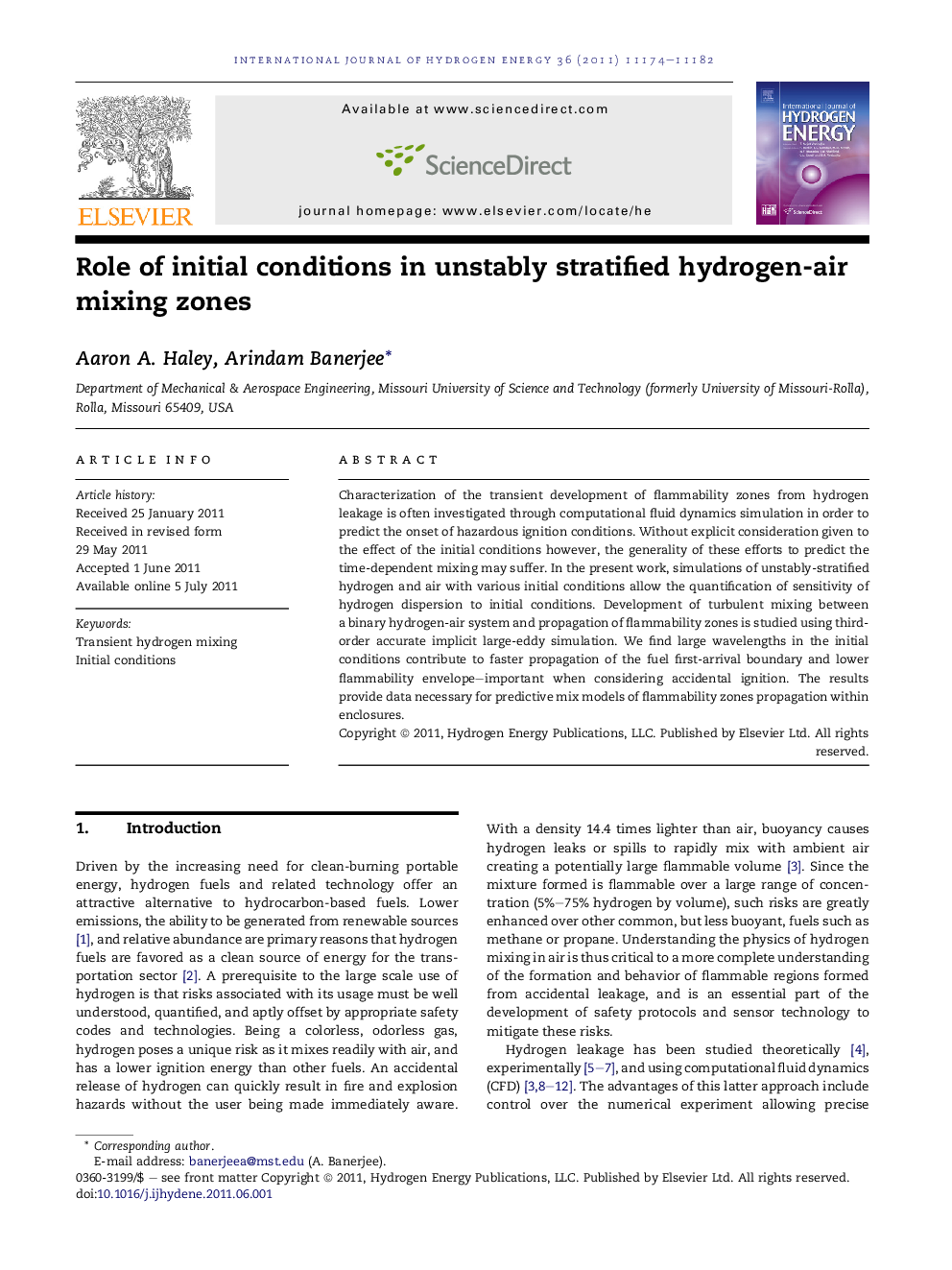| Article ID | Journal | Published Year | Pages | File Type |
|---|---|---|---|---|
| 1277590 | International Journal of Hydrogen Energy | 2011 | 9 Pages |
Characterization of the transient development of flammability zones from hydrogen leakage is often investigated through computational fluid dynamics simulation in order to predict the onset of hazardous ignition conditions. Without explicit consideration given to the effect of the initial conditions however, the generality of these efforts to predict the time-dependent mixing may suffer. In the present work, simulations of unstably-stratified hydrogen and air with various initial conditions allow the quantification of sensitivity of hydrogen dispersion to initial conditions. Development of turbulent mixing between a binary hydrogen-air system and propagation of flammability zones is studied using third-order accurate implicit large-eddy simulation. We find large wavelengths in the initial conditions contribute to faster propagation of the fuel first-arrival boundary and lower flammability envelope–important when considering accidental ignition. The results provide data necessary for predictive mix models of flammability zones propagation within enclosures.
► Effect of initial conditions, Boussinesq and explicit diffusion models on unstable hydrogen-air mixing. ► Mixing zone growth sensitive to smallest modes in initial perturbation spectra. ► Boussinesq model cannot reproduce important physical characteristics of this flow for large Atwood numbers. ► Explicit diffusion model reduces mixing zone growth rates significantly. ► Global flammable volume not sensitive to initial conditions or diffusion model.
